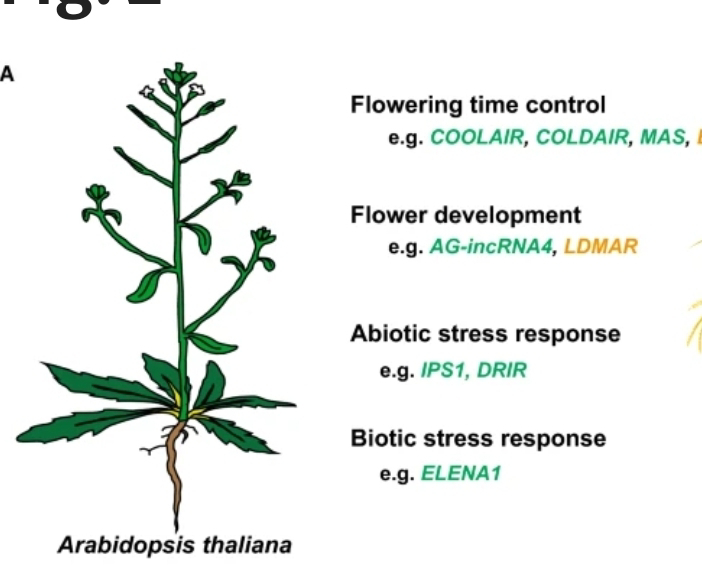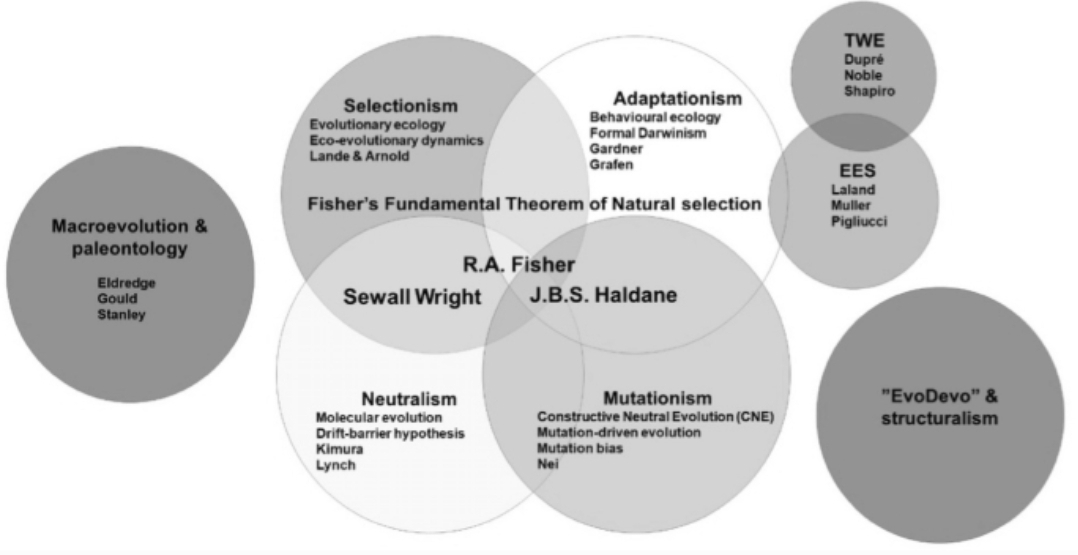Unfolding the Symphony: Epiallelic Variation in Non-Coding RNA Genes and Their Phenotypic Consequences
The 2024 Nature study on epiallelic variation in non-coding RNA (ncRNA) genes has sparked a paradigm shift in our understanding of gene regulation, akin to discovering a hidden conductor within the biological orchestra. It unveils a previously overlooked level of control, where DNA methylation (epigenetics) acts as the baton, orchestrating diverse phenotypes through variations in ncRNA sequences. Going beyond the limits of neo darwinism allows us to delve deeper into the study's implications and exciting future directions.
Mapping the Epiallelic Score: A Complex Tapestry
Imagine 1001 Arabidopsis individual plants, each carrying a unique "score" encoded in the methylation patterns of their miRNA, lncRNA, and snoRNA genes. This study analyzes this elaborate tapestry, revealing how subtle variations in methylation resonate with a captivating range of adaptation traits. It's as if these seemingly silent sequences whisper cryptic messages, hinting at a hidden language where ncRNAs compose the melodies of biological responses.
Beyond the Conductor's Baton: Unveiling the Epigenetic Choreography
These epialleles exist independently of known DNA methyltransferase genes, suggesting a previously uncharted choreography. The conductor isn't simply dictating to the choir; there's a hidden layer of control beyond the Darwinian choirmaster's baton. Further exploration reveals an enrichment of epiallelic variation in specific chromatin states, the backstage crew responsible for DNA organization and accessibility. This unveils potential mechanisms governing ncRNA methylation, adding another layer of complexity to the symphony.
Amplifying the Solo: From miR157a to a Universe of Possibilities
But mere observation isn't enough. Imagine plucking a single string; the melody remains incomplete. The power lies in understanding how these variations impact phenotypes. Enter Arabidopsis individual plants, each carrying a unique "score" encoded in the methylation patterns of their miRNA, lncRNA, and snoRNA.
This validation is more than just a confirmation; it's the conductor raising the baton, demonstrating the potent control of ncRNA epialleles on biological responses. It's akin to amplifying the solo of a previously unknown virtuoso, showcasing their power over the entire performance.
Composing the Score of Resilience: From Adaptation to Applications
This discovery opens a vibrant research avenue with immense potential. Can we link specific ncRNA epialleles to adaptation across diverse environmental pressures? Imagine deciphering the melody that allows a polar bear to thrive in the Arctic or a desert cactus to endure drought. Such knowledge could not only revolutionize our understanding of adaptation but also open doors to applications like engineering climate-resilient crops or disease-resistant organisms. We could potentially rewrite the score of resilience, composing harmonies that allow organisms to adapt and thrive in a changing world.
Exploring the Unwritten Measures: A Symphony of Future Resonances
This initial research lays the foundation for diverse future explorations:
Deciphering the Downstream Score: Unveiling the molecular pathways influenced by ncRNA epialleles is crucial. Understanding how these variations translate into changes in gene expression and cellular responses will paint a clearer picture of the conductor's intricate score. It's like analyzing the sheet music to truly appreciate the depth and complexity of the music being played.
Evolutionary Harmonies: Investigating the conservation of ncRNA epialleles across different species and how they contribute to evolutionary divergences is another exciting avenue. Could these variations hold the key to understanding rapid adaptation and speciation? It's akin to comparing scores from different eras, revealing how melodies have evolved and diversified over time.
Beyond the Final Note: A Symphony of Understanding
By embracing the complexities and potential of ncRNA epiallelic variation, we can begin to compose a richer symphony of our understanding. It's not just about adding a few notes to an existing melody; it's about appreciating the entire composition, recognizing the subtle power of ncRNAs and their dynamic interplay with the environment. As we delve deeper, we may not only rewrite the script of individual traits but gain a profound appreciation of life.
Exploring Evolutionary Harmonies:
The study primarily employed Arabidopsis as a model organism, offering valuable insights into the role of ncRNA epialleles in plant adaptation. However, the symphony extends far beyond a single instrument. Investigating the conservation of these epialleles across different species is key to understanding their evolutionary significance. How do these variations contribute to phenotypic differences observed between species? Comparing ncRNA epialleles across the evolutionary spectrum is like analyzing scores from different eras, revealing how melodies have evolved and diversified over time. Such understanding could shed light on the mechanisms of adaptation and shed light on the diverse strategies organisms employ to thrive in different environments.
Transposing the Melody: From Model to Man:
While Arabidopsis provides a valuable foundation, the ultimate aim is to translate this knowledge to understand and potentially manipulate ncRNA epialleles in other organisms, including humans. This journey requires adapting tools and techniques, expanding the orchestra to include the diverse players of the biological world. It's like transposing the composition into different keys, allowing it to be played by a wider range of instruments. This necessitates not only technical advancements but also careful consideration of the ethical implications.
The Final Note: A New Era of Biological Understanding
By embracing the complexities and potential of ncRNA epiallelic variation, we initiate a new era of biological understanding. It's a journey that transcends individual notes and delves into the heart of the composition, appreciating the subtle melodies played by non-coding sequences and their intricate interplay with the environment. As we explore the downstream pathways, delve into evolutionary narratives, and translate this knowledge across diverse organisms, we not only rewrite the script of individual traits but gain a profound appreciation for the interconnectedness and dynamic nature of life itself. This newfound understanding holds the potential to revolutionize our approach to medicine, agriculture, and conservation, composing a symphony of knowledge that resonates with future generations.
How these concepts support the need for an extended evolutionary synthesis.
The Modern Synthesis (MS): This framework, established in the mid-20th century, explains evolution through natural selection acting on random mutations. It primarily focuses on DNA sequence changes and their impact on protein function.
The Extended Evolutionary Synthesis (EES): This broader framework acknowledges the contributions of diverse mechanisms beyond just DNA sequence, including epigenetics, developmental biology, symbiosis, and cultural evolution.
How the Article Supports EES:
Focus on Non-Coding RNA (ncRNA): ncRNAs play crucial roles in gene regulation, but MS largely overlooks them. This article highlights the extensive epigenetic variation in ncRNA genes and its link to phenotypic diversity, emphasizing the need to expand evolutionary theories beyond protein-coding DNA.
Epiallelic variation: The article demonstrates how ncRNA gene methylation (epialleles) can change independently of DNA sequence, influencing phenotypes across generations. This challenges the MS's emphasis on DNA sequence as the sole driver of heritable variation.
Phenotypic consequences: The study links ncRNA epialleles to various plant adaptations, indicating that epigenetic variation significantly contributes to evolutionary dynamics. This expands the scope of evolution beyond just natural selection acting on random mutations..
Why Move Beyond MS?
Explanatory limitations: MS struggles to explain phenomena like transgenerational inheritance of traits without direct DNA changes or rapid adaptation within a single generation. EES offers a more comprehensive framework.
Emerging evidence: Extensive research now highlights the roles of epigenetics, symbiosis, and other non-genetic factors in evolution. The MS can't explain these findings.
Future challenges: Addressing complex issues like antibiotic resistance, climate change adaptation, and speciation requires understanding mechanisms beyond the MS's scope.
Conclusion:
"Epiallelic variation of non-coding RNA genes and their phenotypic consequences" provides a compelling case for moving beyond the limitations of the Modern Synthesis. By highlighting the significant role of non-genetic factors like ncRNA epialleles in shaping phenotypes and adaptation, the study supports the need for a more inclusive and flexible framework like the Extended Evolutionary Synthesis to accurately represent the diverse mechanisms driving evolution. While further research is crucial, this work underscores the expanding frontiers of evolutionary theory and its potential to deepen our understanding of life's remarkable diversity.






Comments
Post a Comment